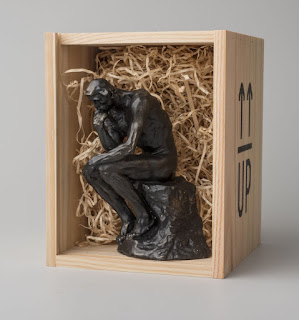The last vestiges of the once impressive institution known as the “university” are disappearing as our culture continues to crumble. Perhaps it is poetic justice, since the universities themselves have been a central cause of the cultural collapse that is burying them.
The recent riots at the University of California at Berkeley and on other campuses are the result of a decades-long process that has increasingly sought to silence opinions or facts that are at odds with liberalism. Most universities have become indoctrination centers that tolerate little if any dissent. Ideas are not considered. Rather, the usual approach is that of excoriating dissent from liberal or progressive orthodoxy with ad hominem attacks, calling those who disagree bigoted, intolerant, hateful, or (fill-in-the-blank)-phobic.
The discussion and critique of different ideas is a proper notion in a university, but more often today, the person or group holding an opposing idea is attacked, stereotyped, or ridiculed. Protests are a long tradition on college campuses, but protests were once held to show opposition to a speech as it was actually happening or to the ideas that were being presented. Now, protests are aimed at preventing speeches from occurring or ideas from being articulated.
This, of course, is completely counter to what universities should be doing. Once upon a time, young people were sent off to college in order to expand their minds. Ideas from widely divergent positions would be presented and critiqued using principles of philosophy, theology, logic, history, and science. Even Catholic universities, which existed to hand on the faith, would ponder all sorts of views while also vigorously defending or critiquing them based on Catholic teaching. The point of a college education was to become aware of the wider world and to be trained in critical thinking.
Today, most college campuses are a witch’s brew of hypersensitivities, political correctness, language police, “safe zones,” and all sorts of intolerance masquerading as “diversity” and “inclusiveness.” Despite the talk, though, such settings are anything but diverse or inclusive, when one considers the increasing list of views and topics that are banished.
This problem has been growing for decades and it is evidence of what Pope Benedict XVI called the “tyranny of relativism.” When we can no longer point to a reality or a set of truths that all can agree upon as first principles, a struggle ensues that cannot be resolved with an appeal to reason. The one who prevails is not the one who is best able to appeal to reason or principles, but rather the one who has the most power, money, or influence, or the one who shouts the loudest or is better able to intimidate. In this way, relativism has led to the kind of tyranny we see on college campuses today.
Add to this a strangely opposite “daintiness,” such that people are offended by even the most modest rebuttals. “Safe zones” that proliferate on campuses presuppose some sort of deep psychological damage caused by being exposed to different or challenging ideas, and that there exists some sort of right not be offended or challenged. Not only is this fanciful, it is poor training for life.
This has been brewing for decades and has turned universities into exactly the opposite of what they are supposed to be.
In the world of Catholic universities, a line was crossed in 1967 at the Land O’ Lakes conference, at which the assembled leaders of Catholic institutions of higher learning concluded that Catholic identity and faith were inimical to “academic freedom.” As a result, the large majority of Catholic universities shifted to secular models that were not merely neutral to the faith, but often hostile to it.
Universities first began emerging during the high water mark of Christendom, in the 12th and 13th centuries. Perhaps the greatest example of what universities once were can be seen in St. Thomas Aquinas’ Summa Theologica. It contains a pondering of the great questions of that time. A premise or idea is stated, objections are set forth, voices from antiquity are quoted, a response is presented, and then each objection is respectfully answered. As a genre, the “summa” is a kind of written summary of academic debates common among the students and teachers of the day. At the time, it was recognized that the quest for the truth is often facilitated by lively debate, interaction, and ongoing discussion. Even ideas that one opposed were helpful because they assisted in refining one’s own view and better articulating it.
Young people once emerged from universities acquainted with the great ideas, equipped with the skills to critique ideas and philosophies, and educated in both Latin and Greek. It was not a perfect system, but it edified and expanded the students; it gave them the tools to engage in critical thinking.
Such an atmosphere seems long gone on most college campuses today. Rather than expanding the students’ universe of ideas, it has narrowed them. Many young people emerge from their college experience less mature and less prepared for life than when they entered. In fact, many universities today do precisely the opposite of what they were founded to do. The horrifying moral atmosphere that exists on most campuses is another dagger to the life of the mind and to proper human formation and maturity. To be sure there are exceptions, Catholic and non-Catholic, but they are rare jewels among the rubble.
It is a very sad situation, with only a few exceptions that shine brightly in an otherwise bleak sky. Be sober, fellow Catholics. Search diligently for those universities that still fulfill their mission to raise up young adults to higher and better things.
with permission by - Msgr. Charles Pope


No comments:
Post a Comment